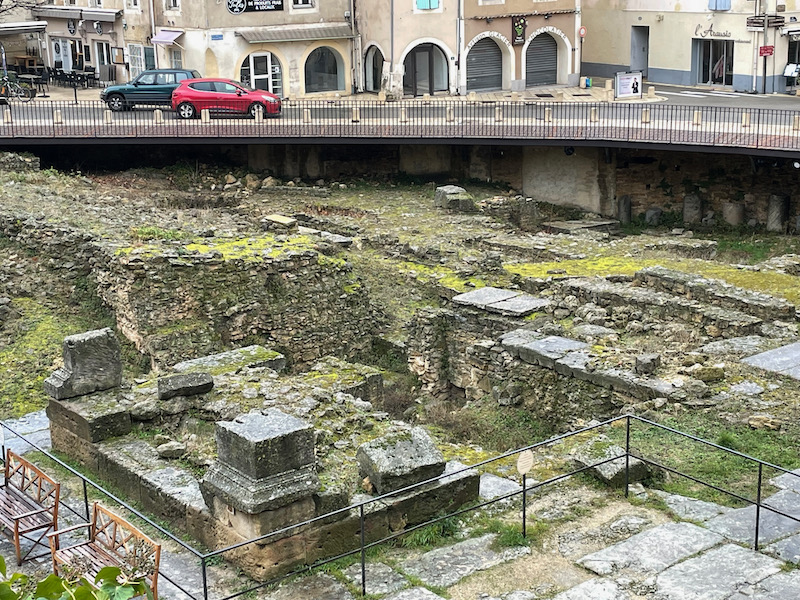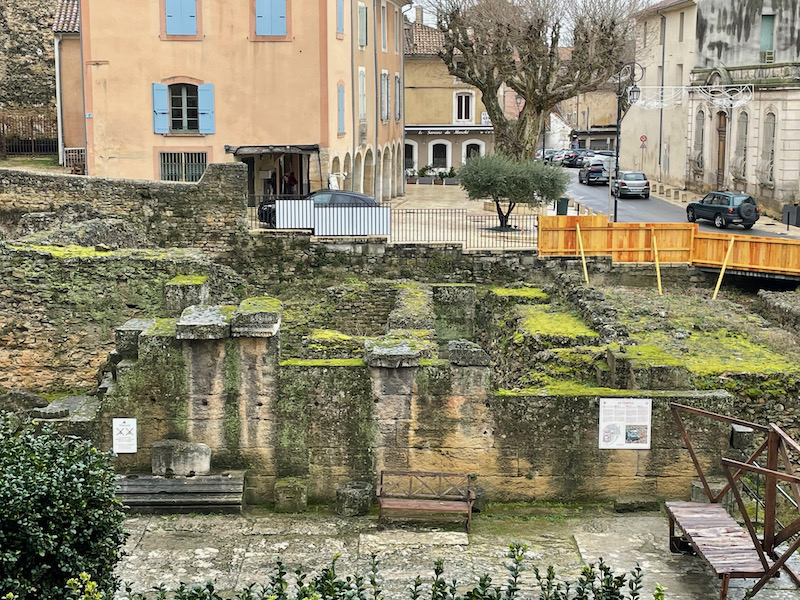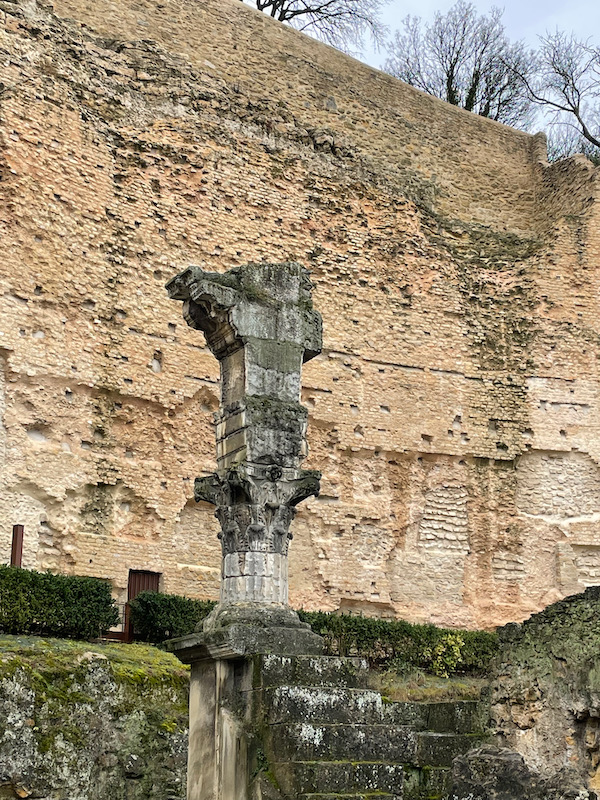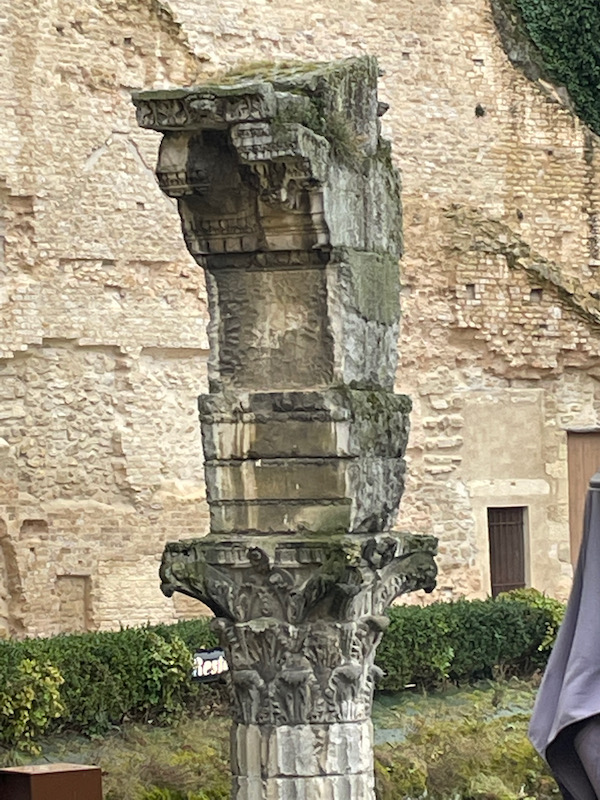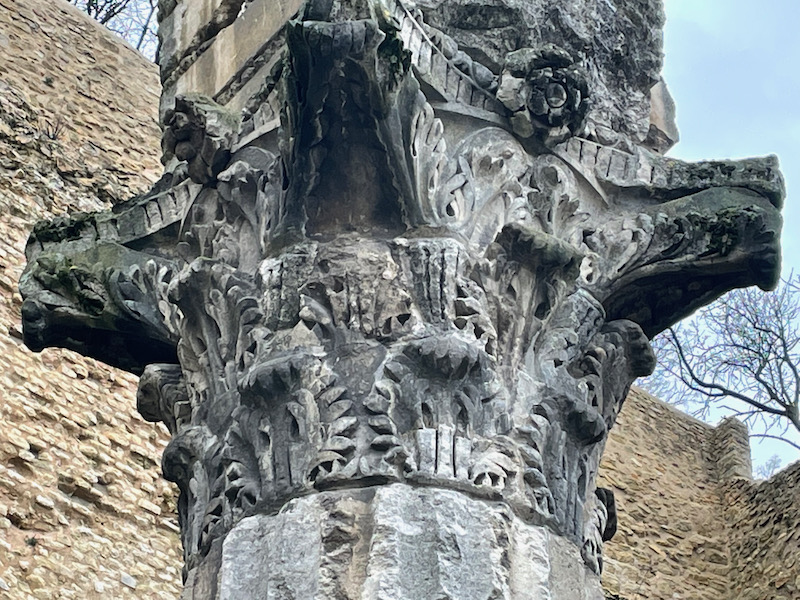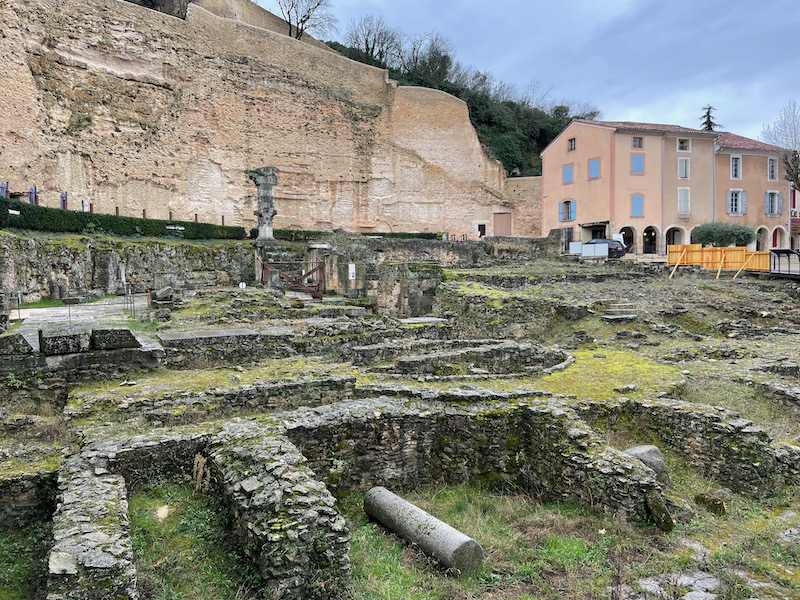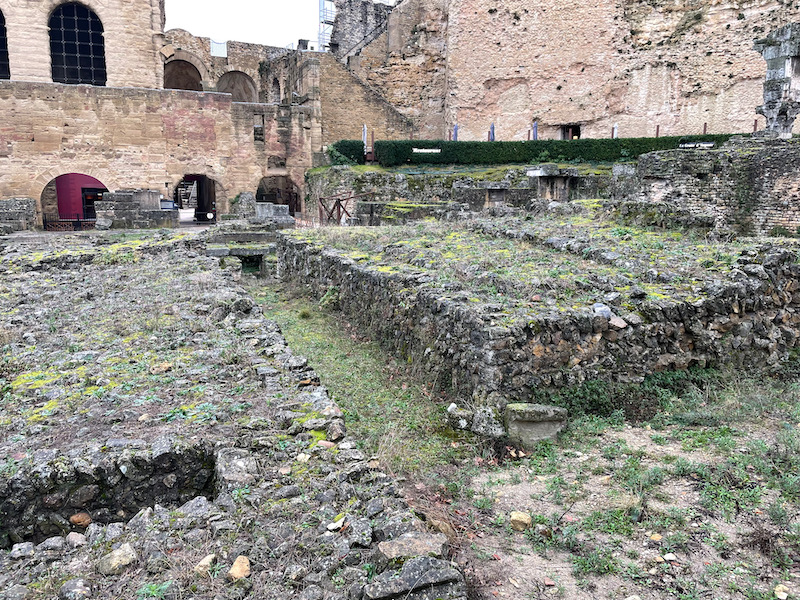Our Blog - Orange, France
Another old Roman city ... this time, Orange. Orange is a Provençal town of around 30,000 people located between the Rhône and the Ventoux rivers, in the heart of the Rhône Valley wines. The Roman city was founded in 35 BC and was the capital of the region. It was sacked by the Visigoths in 412 but by then, had become Christianized.
There are 2 main sights: the Arc de Triomphe and the Roman Theater. We we just "passing through" for an hour or so, so we only went by the Roman Theater. Our last visit to Orange, in 2010, we spent more time and actually went by the Arc de Triomphe in addition to the Theater. The theater is the best-preserved Roman theatre in Europe, and King Louis 14th described the imposing façade of the theater as "The finest wall in my kingdom". One of the main reasons that it is in such great shape is that it has been used continuously throughout the ages. After being used as a theater, it became a fortress in the Middle Ages until the 19th century, when it was restored back to its former state and began staging theater events again.
Here you can see the stage, the 3-story stage wall, and the cavea (the seats for spectators). The stage is covered with a modern roof since the original wooden roof was destroyed by fire in the 4th century. The stage wall was originally embellished with marble mosaics of many different colors, multiple columns and friezes, and statues placed in niches. The central niche contains an 11-foot-tall statue of the emperor Augustus, although this was most likely a restoration of an original statue of Apollo, the god of music and the arts. There were originally 76 columns some of them were found under the stage in 1931 and restored to their original positions. The theater could hold 10,000 spectators and, as you can see, the terraces for the seating were carved out of a hillside, making them easier to build and more stable.
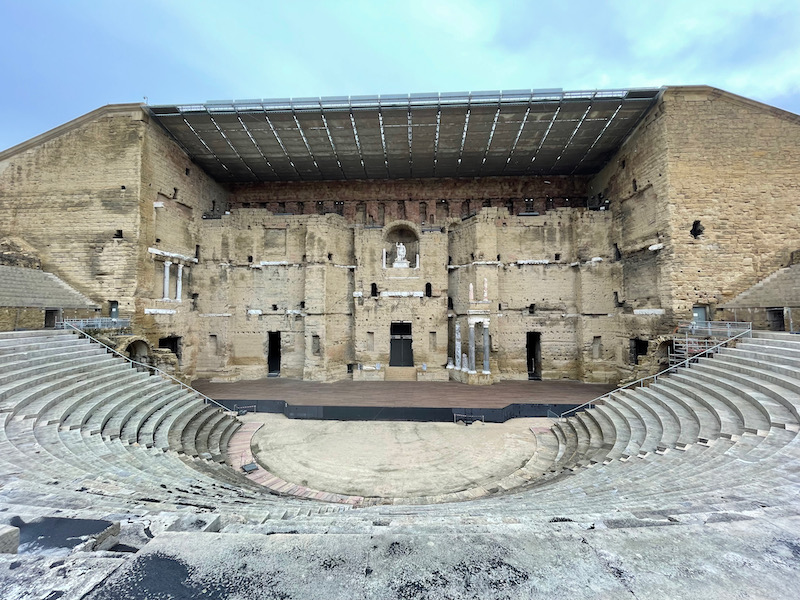
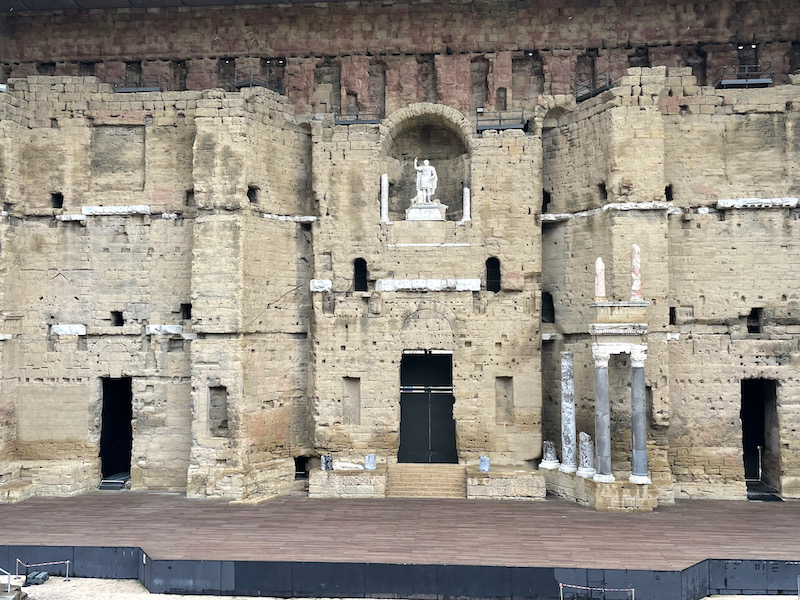
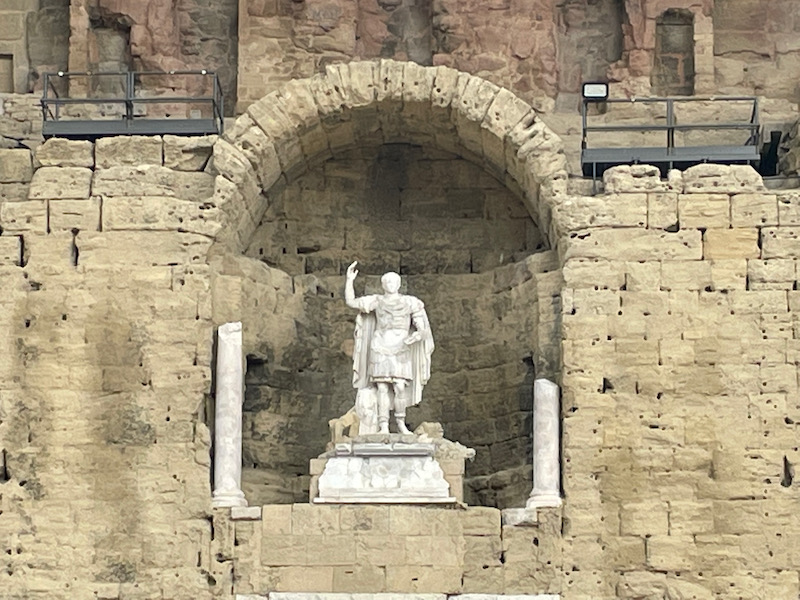
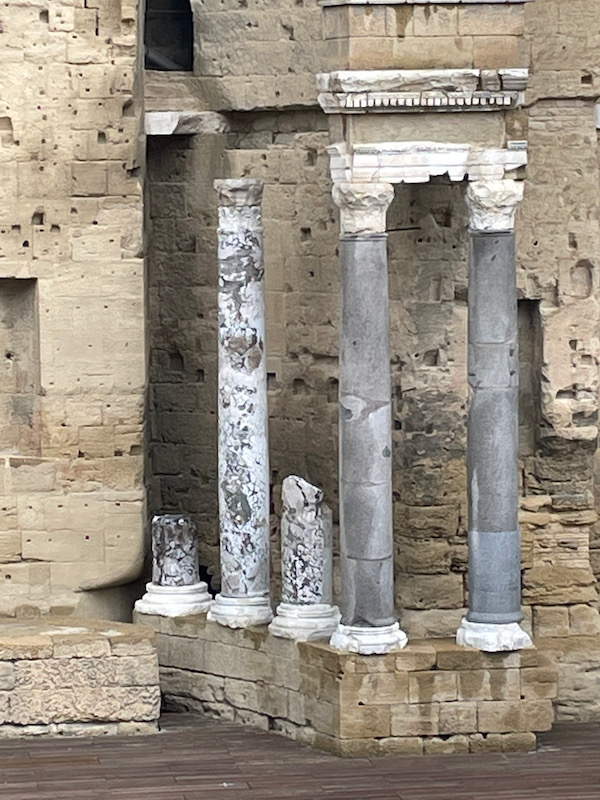
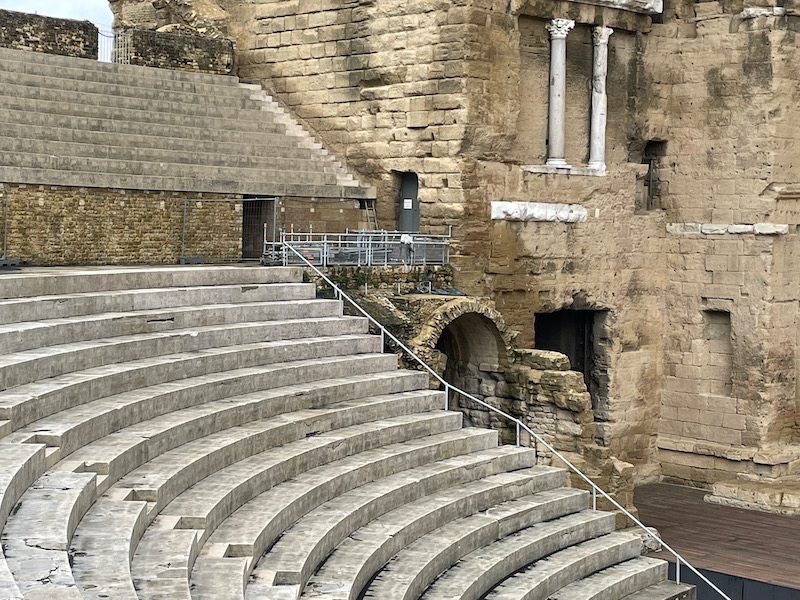
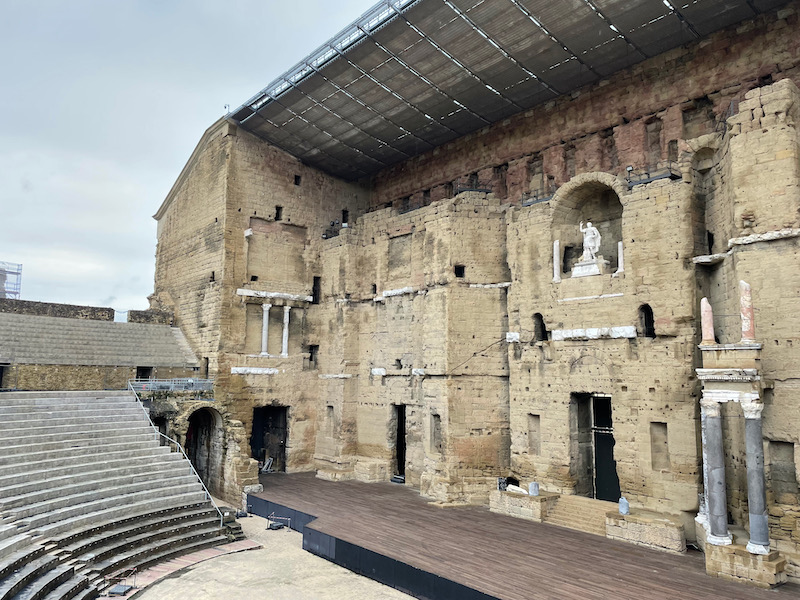

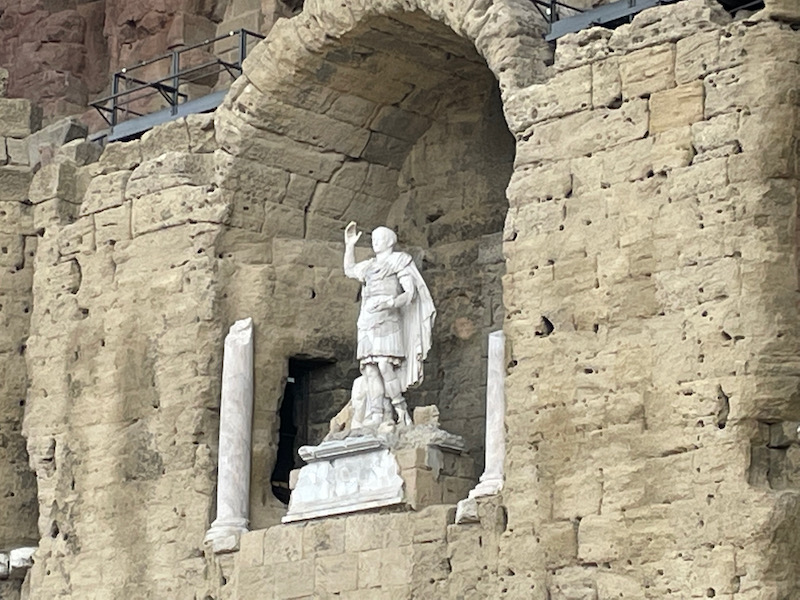
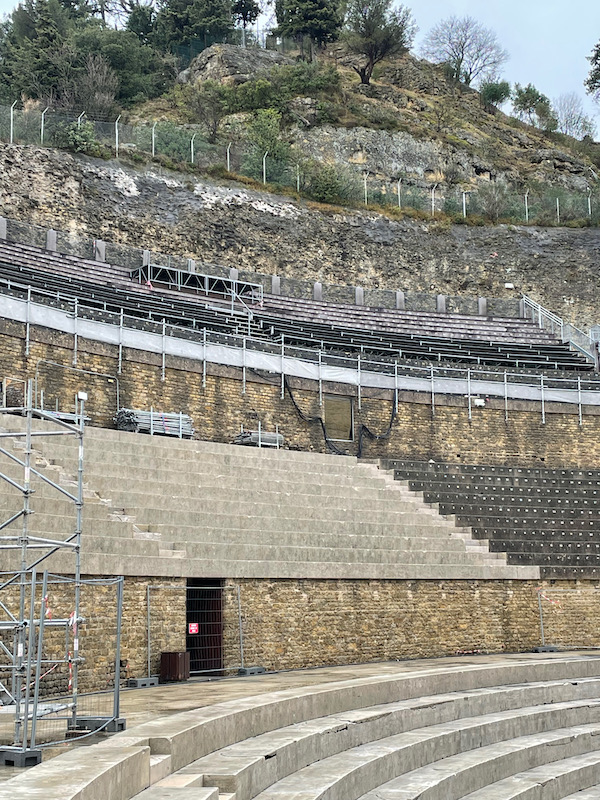
A few more pictures from near the top.
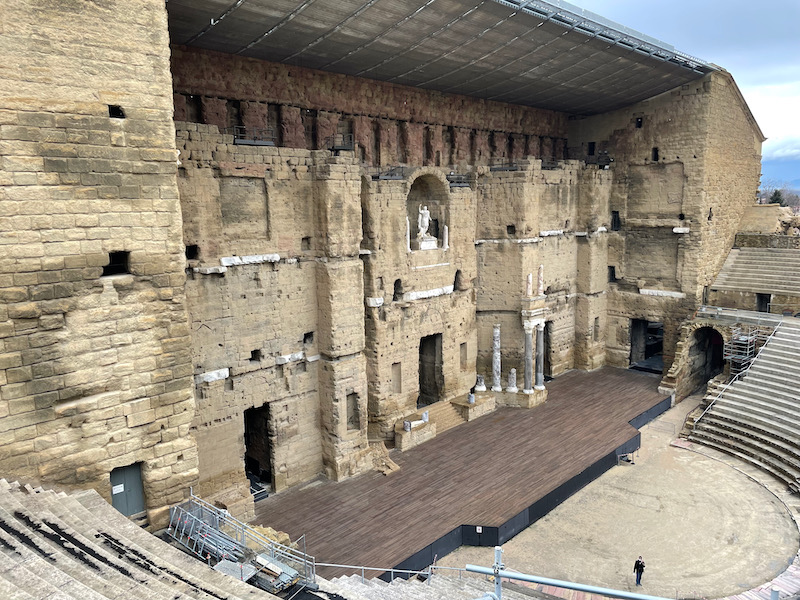
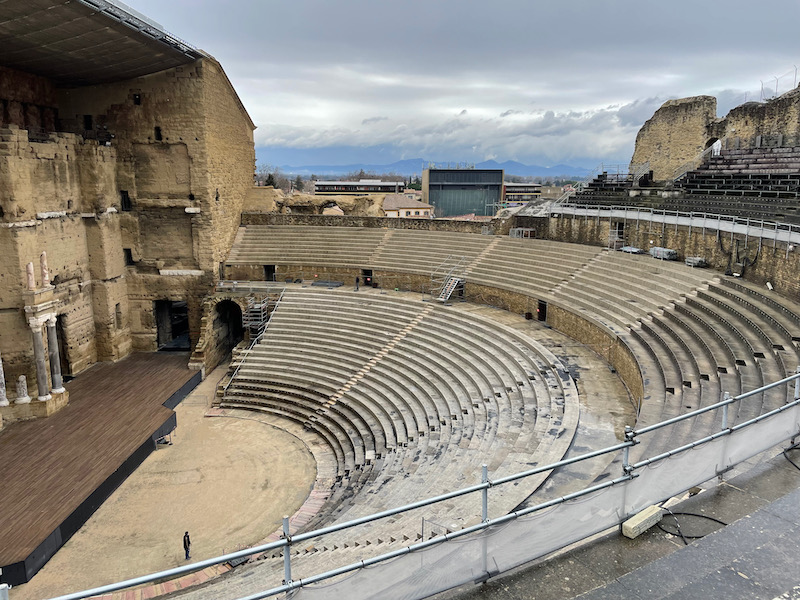
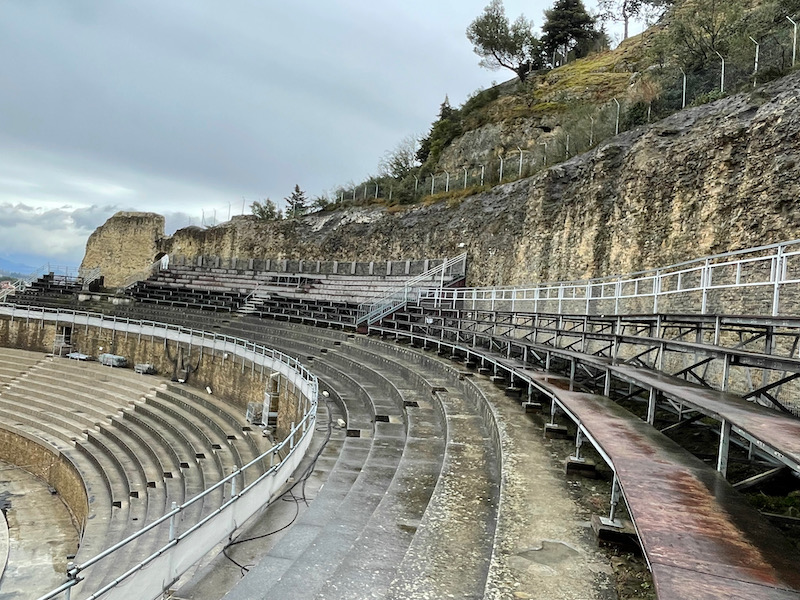
This is one of the huge arched entryways into the theater, with Tom and Lucy for perspective.
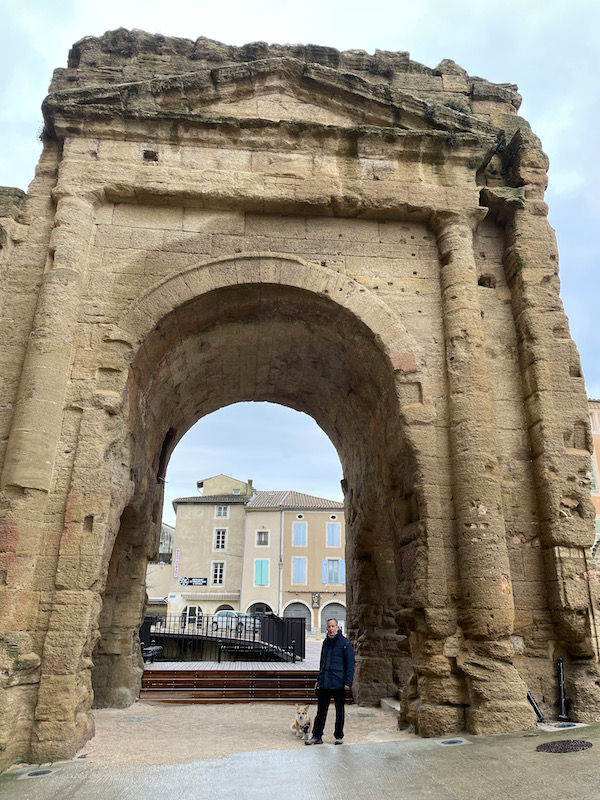
A look across the temple foundations to the side of the theater.
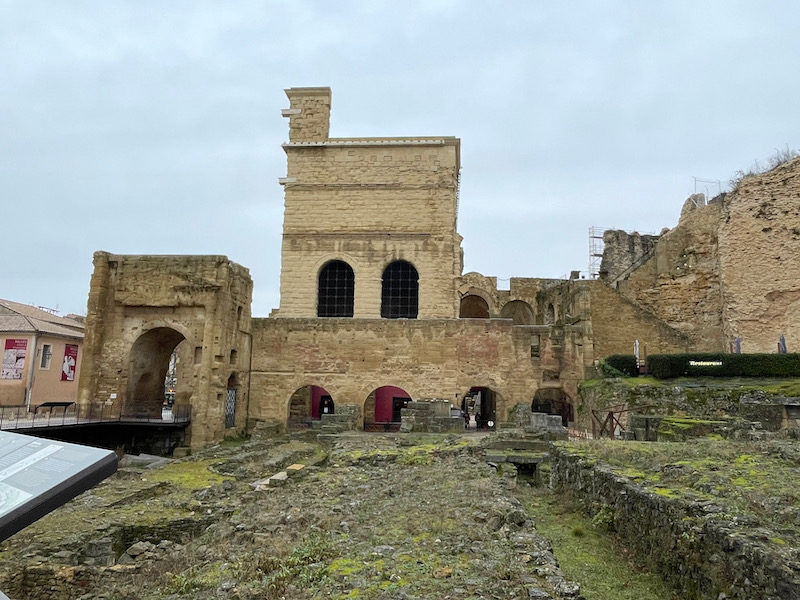
And here we are at the front (which was too big to get in a single picture until you get on a weird angle). On the top part, you can see the stone corbels which supported the roof structure and a deep groove, the remains of the anchoring for the tiles on the roof.
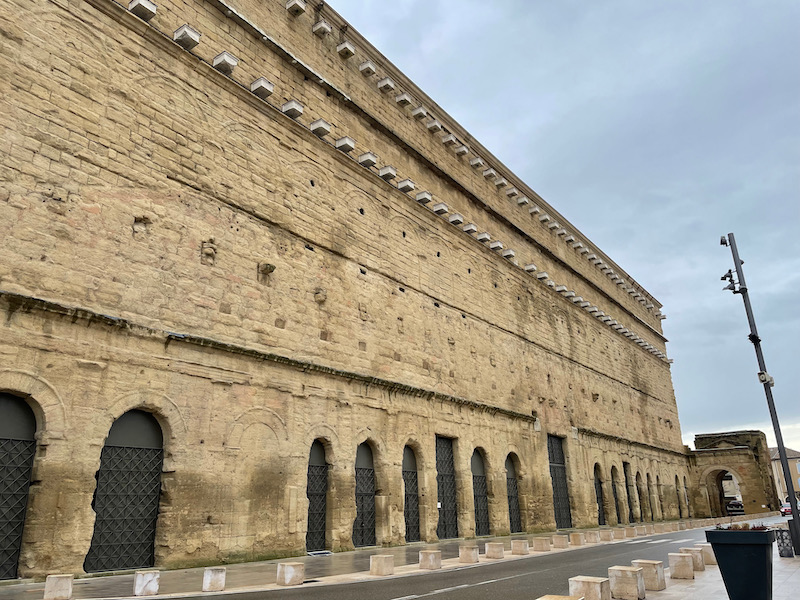
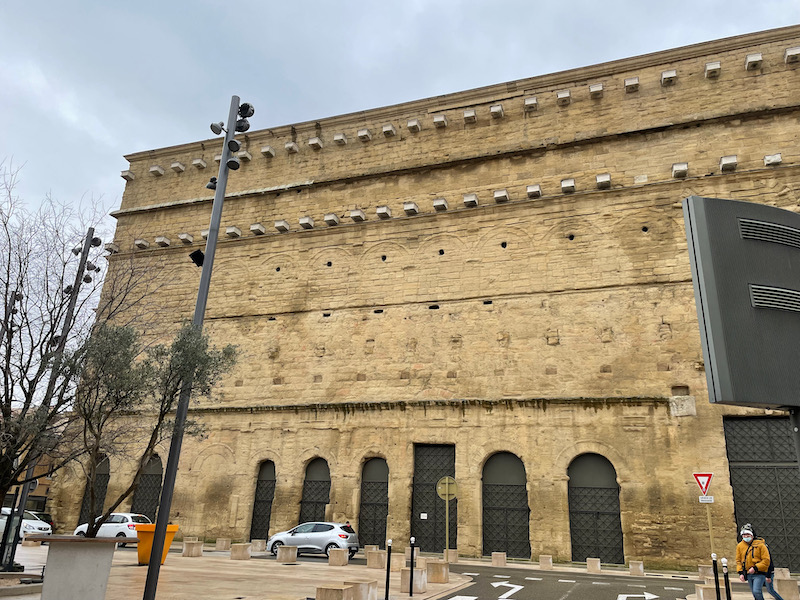
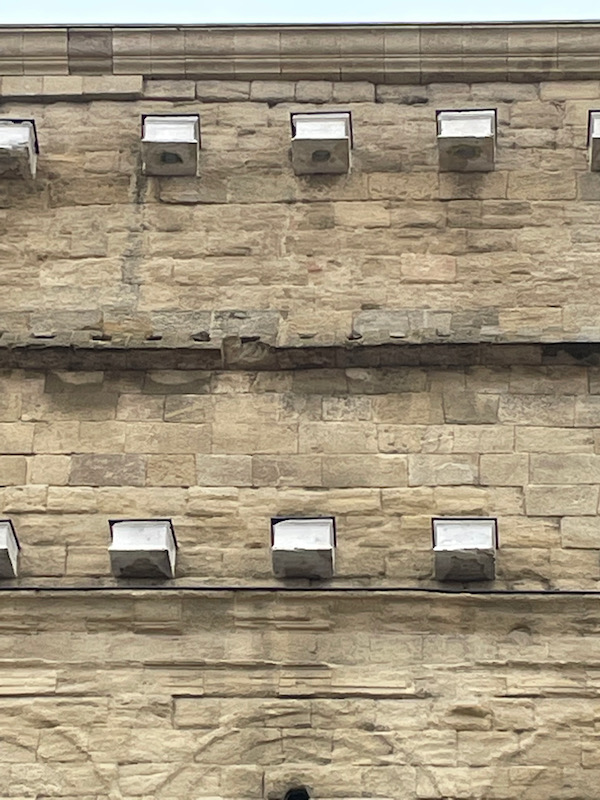
Then as we headed around the corner, you can see some of the lovely arches. Originally, there were 3 levels of these arches.
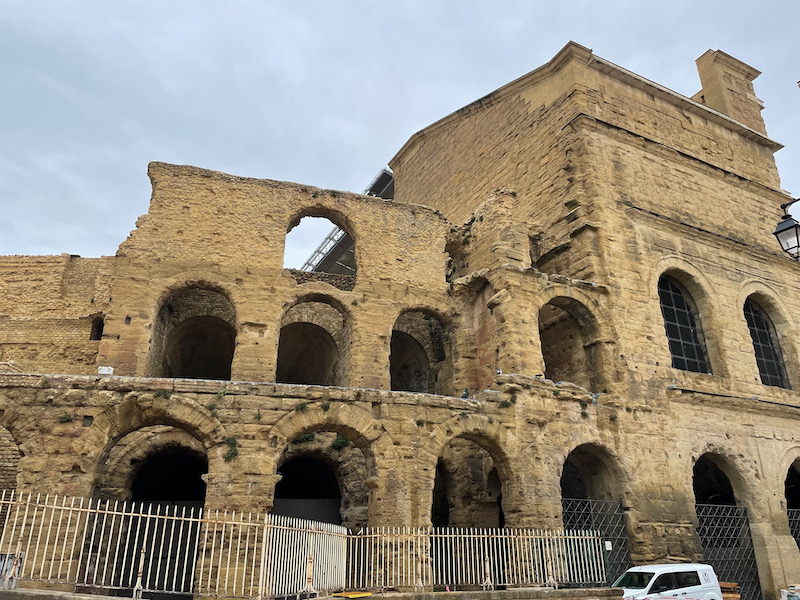
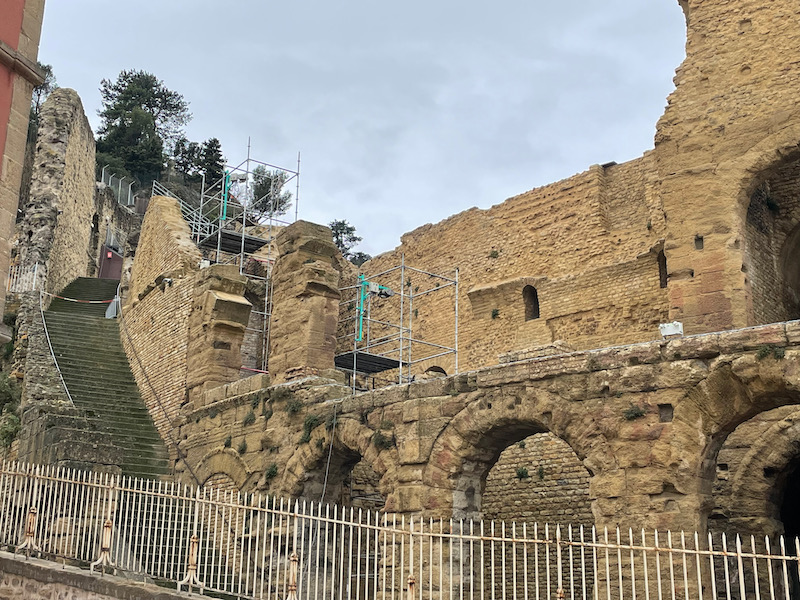
A bit of trivia: the Roman theatre was restored in 1869 and has been the site of a music festival ever since. The festival, given the name Chorégies d'Orange in 1902, has been held annually ever since (other than a couple years that it was canceled due to the Covid pandemic). It is now famous as an international opera festival and has attracted many top international opera stars including Plácido Domingo and Montserrat Caballé.
Here is a drawing of what the area was like in Roman times. You can see the huge semi-circular theater in the foreground. Just above, you can see a Roman temple. Excavations next to the theater revealed the foundations of a temple and its altar. It was probably built in the 2nd century AD and dedicated to the worship of the Roman Emperor.
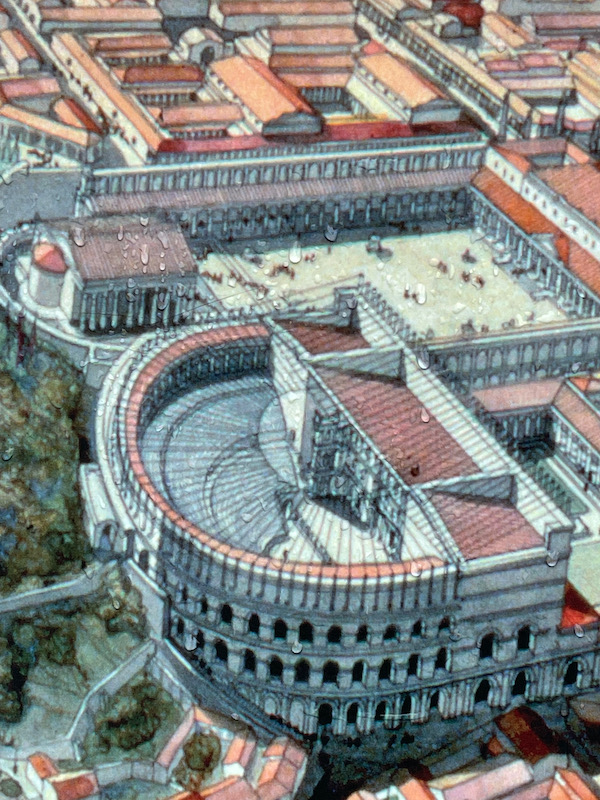
And here you can see the foundations of the temple along with a really nicely-preserved Corinthian column.
